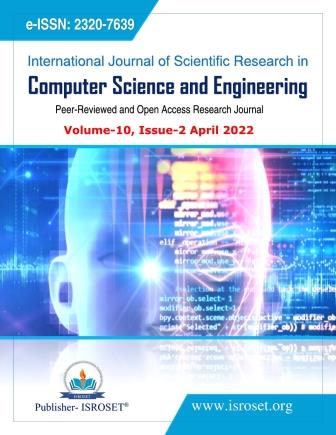Role of Digitalization in Balancing Work during Pandemic: Case of Microsoft
Keywords:
Microsoft, Digitalization, Balancing Work, PandemicAbstract
There has been a major shift in how workers and employers interact and how they see their lives as a consequence of digitalization. Individuals whose jobs could be done remotely because to the COVID-19 epidemic were required to do so. This document summarizes the results of all of these different studies. Researchers think it is the most comprehensive collection of studies on the influence of the pandemic on workplace behaviour to date. The results reveal a number of pressing issues and potential for the development of new working methods that are more efficient, egalitarian, and invigorating in nature. It will never be the same at work again. It is, however, something we intend to improve upon with attention and effort. The resources accessible to workers in the workplace, as well as their well-being, might be harmed if work is done away from the office, colleagues, and supervisors. When it comes to employee well-being, remote working has a significant impact. To test this idea, researchers looked at how often employees worked from home and how much of their work was digitised.
References
Aceto G., Botta A., Marchetta P., Persico V., Pescapé A. A comprehensive survey on internet outages. Journal of Network and Computer Applications. 113:36–63. 2018.
Baig A., Hall B., Jenkins P., Lamarre E., McCarthy B. McKinsey Digital; 2020. The COVID-19 recovery will be digital: A plan for the first 90 days.
Casadesus-Masanell R., Zhu F. Business model innovation and competitive imitation: The case of sponsor-based business models. Strategic Management Journal. 34(4):464–482. 2013.
Christina Hegele and Abhinav Singh. Can we balance work and life under one roof? Home | Work Blog from Microsoft Workplace Insights. 2020.
Ebrahim Z., Irani Z. E-government adoption: Architecture and barriers. Business Process Management Journal. 11(5):589–611. 2005.
Effah J., Nuhu H. Institutional barriers to digitalization of government budgeting in developing countries: A case study of Ghana. Electronic Journal of Information Systems in Developing Countries. 82(1):1–17. 2017.
Higgins D.M. The black swan effect and the impact on Australian property forecasting. Journal of Financial Management of Property and Construction. 18(1):76–89. 2013.
Kreiser Patrick M., Anderson Brian S., Kuratko Donald F., Marino Louis D. Entrepreneurial orientation and environmental hostility: A threat rigidity perspective. Entrepreneurship Theory and Practice. 44(6):1174–1198. 2020.
Lokuge Sachithra, Sedera Darshana, Grover Varun, Dongming Xu. Organizational readiness for digital innovation: Development and empirical calibration of a construct. Information & Management. 56(3):445–461. 2019.
Nambisan Satish, Lyytinen Kalle, Majchrzak Ann, Song Michael. Digital Innovation Management: Reinventing innovation management research in a digital world. Mis Quarterly. 41(1):223–238. 2017.
Prithwiraj Choudhury, Cirrus Foroughi, and Barbara Larson. 2019. Work-from-anywhere: The Productivity Effects of Geographic Flexibility. SSRN Electronic Journal.
Renate Fruchter and Marisa Ponti. Distributing attention across multiple social worlds. AI & SOCIETY 25, 2: 169–181. 2010.
Schou Jannick, Hjelholt Morten. Digital state spaces: State rescaling and advanced digitalization. Territory, Politics, Governance. 7(4):438–454. 2019.
Soto-Acosta Pedro. COVID-19 Pandemic: Shifting Digital Transformation to a High-Speed Gear. Information Systems Management. 37(4):260–266. 2020.
Zhang Hongxu, Amankwah-Amoah Joseph, Beaverstock Jonathan. Toward a construct of dynamic capabilities malfunction: Insights from failed Chinese entrepreneurs. Journal of Business Research. 98:415–429. 2019.
Downloads
Published
How to Cite
Issue
Section
License

This work is licensed under a Creative Commons Attribution 4.0 International License.
Authors contributing to this journal agree to publish their articles under the Creative Commons Attribution 4.0 International License, allowing third parties to share their work (copy, distribute, transmit) and to adapt it, under the condition that the authors are given credit and that in the event of reuse or distribution, the terms of this license are made clear.







